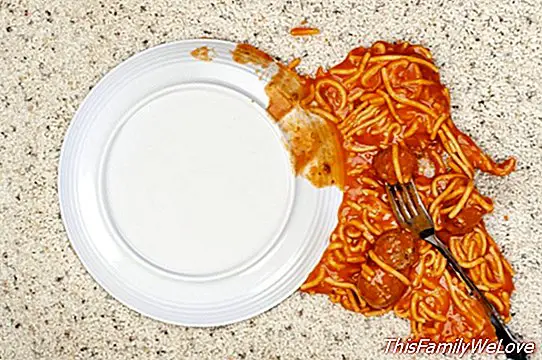The rule of five seconds, denied by a group of scientists

Can you take advantage of a piece of food What falls on the ground? Popular culture until now said yes, as long as they do not pass five seconds since it rushes. According to this popular legend, which many still believe, this prevents food from being filled with microbes. However, a group of scientists has denied this rule.
According to this work, carried out by Rutgers University in New Brunswick, New Jersey, contamination of food occurs only a second after they touch the ground. Donald Schaffner, leader of this research, states that "bacteria and other microbes can contaminate almost instantaneously".
Same pollution on all food surfaces
The researchers wanted to see if the five-second rule could be true on certain surfaces. For this, they chose floors constructed of different materials: ceramics, stainless steel, wood and carpets. On these lands they poured a bacterium similar to salmonella to check how long it took to contaminate the food that was dropped.
The foods that were dropped on the ground were several: fruit, bread, sweets, candies, etc. All with the intention if any combination between type of surface and type of food could confirm the rule of five seconds. The researchers let the bacteria contaminate these foodstuffs for several periods of time: one second, five seconds, 30 seconds and 300 seconds.
A total of 128 scenarios different where the five-second rule was subjected to examination. We carried out 2,560 measurements that confirmed that the transmission of bacteria was carried out almost instantaneously no matter how much the surface in which the food fell.
Humidity increases food contamination
Although the five-second rule was not confirmed, the researchers did find that under some circumstances the pollution was more serious. In those surfaces that had a higher rate of humidity, the germs acted more aggressively on the food that fell on the ground.
The higher the humidity, the greater the number of bacteria that populated this food. "The bacteria they do not have legs, they move with humidity, and the more wet the food, the higher the risk of transfer, "explained Schaffner, who added:" In addition, a longer contact with food usually results in the transfer of more food. bacteria from each surface to food ".
In fact, the researchers found that those foods with a greater amount of water were those that more were contaminated. Pieces of fruit, for example, had a greater number of bacteria than sweets. This confirms the position of Schaffner, who argues that moisture in foodstuffs also contributes to infection with these microbes.
Beware of soil foods
The researchers indicated that the care that must be taken when a food falls to the ground must be extreme. According to what they said, you never know what goes around these surfaces and what has been able to enter the house through our shoes. No matter how much a home is cleaned, microbiotic life it will continue to exist.
"The five-second rule is a excessive simplification important of what actually happens when bacteria are transferred from a surface to a food, "conclude those responsible for this study.
Damián Montero




